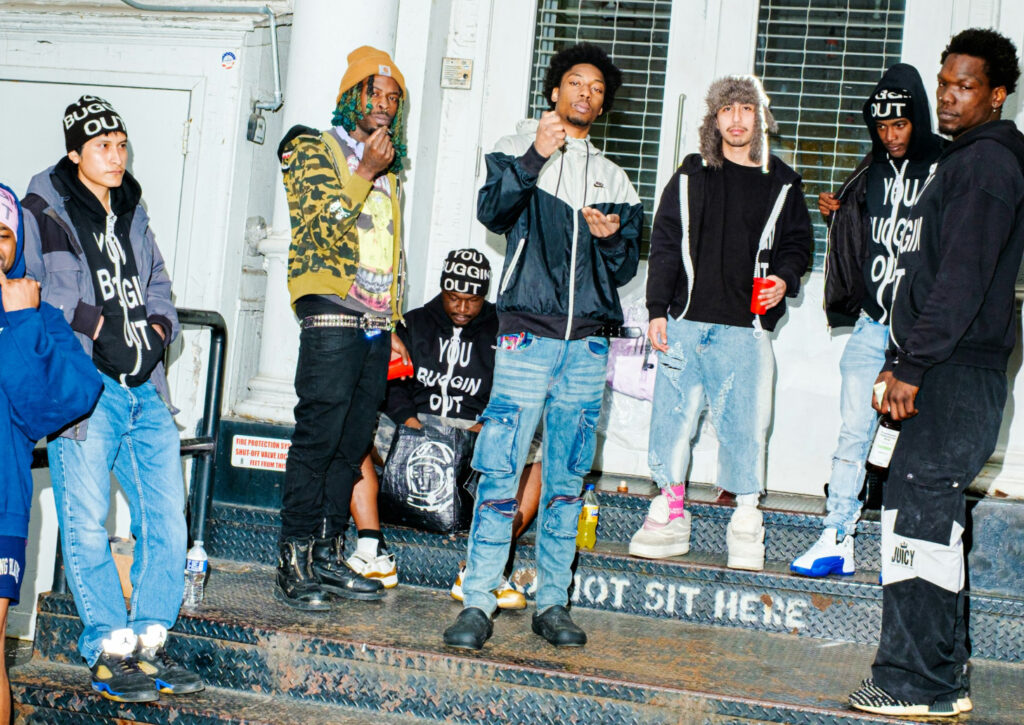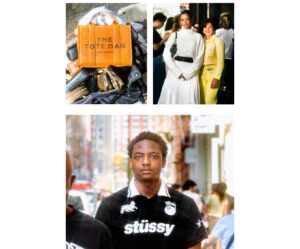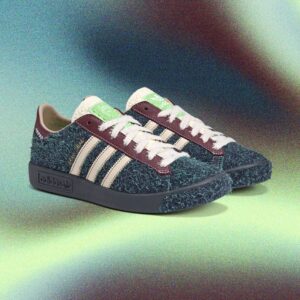
On a sunny spring weekend, photographer Evan Angelastro set out to trace the footprints of a cultural phenomenon now verging on ghost town status: the Clout Corridor. Once a buzzing, fashion-forward strip of downtown Manhattan, this SoHo intersection was more than just a shopping destination—it was a stage. Between 2016 and 2019, Mercer and Howard Streets became an IRL algorithm, engineered for maximal digital impact. Streetwear devotees, social media micro-celebrities, and clout-chasers gathered to flex, pose, and participate in a culture powered as much by scarcity drops as by the Instagram feed.
The streets were never just sidewalks—they were runways. And now they’re quiet.
Once packed with queues that snaked around corners, the Clout Corridor is no longer the pilgrimage site it once was. The brands that defined its energy—Off-White™, Palace, NikeLab, VFiles—have either closed, relocated, or faded from the hype cycle. Stadium Goods, once a resale temple for sneakerheads, is shuttered. In its place: knockoff merchants, empty storefronts, and a vibe not unlike a film set after wrap. The youth are gone. And without them, the spell is broken.
The Golden Years: 2015–2019
To understand what’s lost, we need to revisit what was gained—or at least experienced—during the corridor’s peak. In the mid-2010s, streetwear was ascendant. Brands like Supreme had gone from niche skate shops to global fashion behemoths, and figures like Virgil Abloh were reimagining what design could be when filtered through hip-hop, internet irony, and Black cultural codes. SoHo became the proving ground for this new ecosystem of style and swagger.
But it wasn’t just about the clothes. The clout economy was a new kind of social game, and the Clout Corridor was one of its most visible arenas. Kids traveled from out of state just to loiter on Mercer Street, hoping to be photographed by street style blogs, hoping to meet a YouTuber, hoping to catch a restock alert from an employee or even an influencer tip-off. There was an aura of access—even if it was all for show.
Social capital was currency, and this was where you could earn it.
Virgil, Ye, and the Collapse of a Canon
Much of the corridor’s energy orbited around figures like Virgil Abloh and Kanye West. Their combined vision fused fashion with cultural commentary, remixing luxury codes with street language. Abloh’s Off-White™ turned ironic quotation marks into design gospel. West’s Yeezy Season blurred the line between streetwear and survivalist uniform. Their gravitational pull helped elevate a generation of youth who saw in fashion a new kind of artistry—one that was global, meme-savvy, and commercially potent.
But cultural epochs end. Virgil’s untimely death in 2021 left a creative void. Kanye’s increasingly erratic behavior and controversial statements have effectively marginalized him from the mainstream fashion industry. Their absence is not just felt—it’s seen, in the empty storefronts, in the muted crowds, in the broader confusion about where fashion culture goes from here.
Gentrification and Inevitable Decay
The story of the Clout Corridor is also the story of New York real estate. As with so many creative hubs, SoHo’s streets eventually priced out the very kids who made them cool. The rent goes up, the brands pivot to e-commerce, and what was once authentic becomes staged. Tourists replace the locals. Artisanal cafés move in. The culture moves out.
In that sense, the Clout Corridor wasn’t defeated by irrelevance—it was gentrified into silence.
Even the sensory cues are gone. Once, the scent of weed and the bass-heavy echo of trap music bounced between the cobblestones. Now: silence, espresso machines, and construction noise. The cultural theater that once played out daily has been dismantled. All that remains are Instagram memories and resale listings for sneakers that once had a 500-person line wrapped around the block.
From Location to Feed: Where the Culture Went
Of course, culture didn’t vanish—it shifted platforms. The aesthetic sensibility of the Clout Corridor now thrives on TikTok, where Gen Z has fragmented fashion into micro-trends that live and die in a week. You don’t need to stand outside Supreme to be seen; you need a ring light and a “get ready with me” reel.
In fact, physical location has become almost irrelevant. A 16-year-old in Ohio can exert more stylistic influence than someone in SoHo. The streetwear era demanded presence. The current moment rewards production. Clout isn’t a location anymore—it’s a filter, a rhythm, a niche.
And maybe that’s why the corridor feels abandoned. It’s not that the youth disappeared. It’s that the importance of being there disappeared.
Bootlegs and the Post-Hype Economy
Today’s Mercer Street doesn’t draw hypebeasts—it draws hustlers. Faux Gucci belts in cardboard boxes, fake Off-White hoodies peddled by men who once may have been part of the scene themselves, back when the line between real and replica was more ideological than practical.
It’s poetic in a cynical way. The entire premise of streetwear was built on remix culture—bootlegs, samples, mashups of status and rebellion. Now, the bootlegs have consumed the originals. The vibe feels post-authentic, post-hype, post-meaning. What’s left is theater without a script.
Clout, Deconstructed
So what was clout, anyway?
It wasn’t fame, exactly. And it wasn’t status in the traditional sense. Clout was influence without a résumé. It was presence without permanence. It was having enough of something—style, followers, access—to bend space around you, however briefly. The Clout Corridor was a physical manifestation of this concept, where anyone could step onto the stage and see if the camera turned toward them.
Today, influence is more algorithmic. The attention economy doesn’t reward vibes—it rewards volume. You don’t need the fit; you need the frequency. The clout gods have been replaced by content managers.
What Replaces the Corridor?
If SoHo’s Clout Corridor was the temple, what’s the next sacred space? Some say it’s the Discord servers and Reddit threads where gatekeeping and geek culture now dominate taste. Others point to digital fashion, NFT wearables, and the rise of gaming skins as the new drip.
But maybe we’re not in a clout era at all anymore. Maybe we’re in the post-clout era. One where authenticity isn’t performative—it’s strategic. Where relevance isn’t a vibe—it’s an algorithmic outcome.
There’s no longer a street to go to. There’s just a screen to scroll through.
Epilogue: The Lamborghini and La Mercerie
When Angelastro visited recently, the most vivid remnant wasn’t a sneaker line or a viral fit—it was a Lamborghini parked beside a fine dining restaurant. Not a symbol of youth culture, but of wealth. Not aspirational energy, but material finality. The scene felt less like a flex and more like a finale.
In that juxtaposition—of what once was and what now is—we find the ultimate irony. Clout was never about owning the Lamborghini. It was about standing next to it, getting the right angle, posting it before anyone else. Now the kids are gone, and the Lamborghini is parked alone.
Impression
The Clout Corridor’s story isn’t just about fashion—it’s about a cultural phase we’re still processing. A phase where the streets and the screens merged, where style became strategy, and where every fit pic was both performance and portfolio.
We may never go back to the clout economy in its original form. But that doesn’t mean it’s gone. Like all great youth cultures, it’s been absorbed, commercialized, deconstructed—and will be reborn elsewhere.
In the end, the clout isn’t dead. It just changed outfits.
No comments yet.








